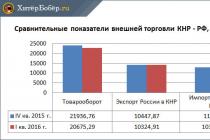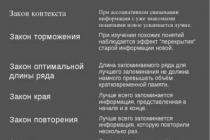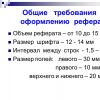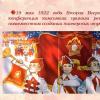TRIPS
In 2010, sensational news spread around the country's news agencies: fossilized dinosaur eggs were found in the Volgograd region! Nikolai Pekhterev, a resident of the village of Mokraya Olkhovka, came across strange round stone formations at the bottom of a small ravine. After a heavy rain, part of the soil was washed out in the ravine - and an unidentified something appeared from under the 10-meter thick earth ... which was called the eggs of unknown dinosaurs. Under this name they went down in history. Of course, various researchers went to the "eggs" and made many conclusions.
In August 2016, we gathered a small expedition and went to see the curiosity ourselves.
Wet Olkhovka is located in the Kotovsky district. An asphalt road leads here from Kotovo, getting to the village itself is not at all difficult.

Difficulties begin in the village itself. You enter the village - and where, one wonders, are the dinosaur eggs? Of course, we started asking this question to local residents, but here you need to understand the specifics of the area. Artifacts are located outside the village, among wide fields cut by dirt roads. The roads wind like streams - running up, merging, intersecting with each other. Being on the ground, it is absolutely impossible to understand - where and where the next primer leads and if it seems that the right road leads in the right direction - whether it will turn in a hundred meters in a completely unnecessary direction.
Accordingly, when you talk with the locals, trying to ask them for directions, you have a wonderful chance to feel mentally retarded: here a person explains to you that now you are driving straight, then you will see a turn to the left, then to the right, then to the right and then to the left, and there, after a hundred meters, it is - the right place. You go, turn off like they explained, but you end up in the wrong place. The questions of a new comer lead to the continuation of windings on primers, although at the moment of explanation everything seems simple and clear. We circled the neighborhood for several hours.

They stopped the car, climbed some hill, from where they tried to look out for something similar to the description
To meet a passerby in such places, I think it's understandable - generally a rarity. These passers-by do not always have a relaxing look, they can go at you with a long knife, so that later with this knife they show you the way in detail. At some point, we realized that a little more - and our patience will burst, and we will leave with nothing. And, as it should be, as soon as we thought about it, the place opened up to us! Almost by accident.

Here they are! The middle "egg", judging by the photographs, five years ago did not have a large chip with a hole, but was the same even ball as the one on the far right

However, here are balls, and ovals, and hemispheres, whole and destroyed. Located they are "haphazardly", but heaped. Surely there are many more of the same around, just hidden under the thickness of the soil.
By the way, this finding is not unique for local residents. Similar things have been found here before. They are sometimes used for construction purposes, and sometimes laid out as a decorative element (although we have not seen a single such decorative element).

Everyone has emptiness inside, or foreign material

The three most notable

Inside - ancient petrified material

A chip that was not there until recently

Strong destruction well shows the internal structure of the "dinosaur egg"

Another similar one in the ground

One of the few whole balls

oval shape

And here is a huge stone that once lay inside an oblong "egg"
Both from afar and close, these strange objects look impressive. However, despite the respect they inspire, it is impossible to call them eggs, even dinosaurs. It's not even about their size or very large wall thickness. All these “eggs” are different, not a single one is the same, and their shapes, as I have already mentioned, are very different, from an almost regular ball to an oval, elongated in length so that the longitudinal radius is three times larger than the transverse one.
The question - what is it, in general, has long been known, however, with some reservations.
Once, during the Mesozoic and Paleogene period, the bottom of the ancient sea was located on this territory. In sea salt water, such “balls” sometimes roll down from sedimentary rocks, inside which often lies a foreign object, which has become a “reason”, around which the material began to “roll down”. Such balls are called concretions. Concretions are still formed at the bottom of the seas and oceans.

From a close distance, the concretions in Wet Olkhovka look rusty
However, the concretions found under Mokra Olkhovka are unusual. They are distinguished by very large sizes (concretions of this size are rare). Laboratory analysis showed that they consist of 70% silicon dioxide, as well as iron and magnesium. Specifically, this type of nodules is called septaria.

At a great approximation - the mountains!
Despite the fact that the balls found are not dinosaur eggs, they are still very interesting, especially for city dwellers, for whom any large stone lying on the ground, if it is not a monument, is exotic. Unfortunately, the concretions found in 2010 are now subject to increased attention, and, along with it, destruction. Photos taken by other people several years ago and posted on the Internet show that many of the chips we saw were not there then.

Interest is good, but we must remember that we must not only satisfy it, but also preserve the object of our interest, and not destroy it. Unfortunately, not everyone understands this.

Dinosaur eggs lurking in the steppes under Wet Olkhovka are beautiful in their own way and worth seeing!
Photo: Roman Skoda and Nikolai Stavrogin
Dinosaurs were very large creatures, so it is generally accepted that their eggs reached enormous sizes. Is it really?
Where was the first dinosaur egg found? What are their sizes, according to scientists? What are they? Let's analyze these questions.
First find
1923 became the "pioneer" in documenting such a find as a dinosaur egg. Where and how did it happen? In Mongolia. A group of American paleontologists first discovered one egg, then several clutches. Bain-Dzak became the "homeland" of this find. After examining the found eggs, scientists came to the conclusion that the masonry belonged to protoceratops.
Characteristic
Currently, more than 10 types of eggs belonging to one or another species of dinosaurs have been identified. The two types of shells that are known to scientists are characterized as single-layered and double-layered.
There are differences even between the forms of preservation of eggs. Paleontologists have found those that have survived almost completely. In addition, the skeletons of dinosaur embryos were safe and sound in these eggs.
There is such interesting fact like growth break in the egg shell. Paleontologists have the opinion that the female, who bore the eggs, fell into suspended animation. This slowed down the development of the shell. Then she left it, and the egg continued to develop.
It is worth paying attention to the nesting of dinosaurs. Judging by the choice of seats, representatives different types lived in one small area. This suggests that ancient lizards were social. Together it was more convenient for them to take care of their offspring.
dinosaur egg size
What kind of eggs did such large predators? Oddly enough, but very small: no more than 50 centimeters.
Is the color only white? No, they found the remains of a pink shell and blue eggs.

Modern research
It used to be that looking for a dinosaur egg in Russia was a waste of time. However, scientists had to be convinced of the opposite. Shell fragments, along with the remains of teeth and claws, were found in the Kolomensky district of the Moscow region, as well as in Siberia.
Now they are studying the aeration channels of dinosaur eggs, the elements that make up eggshell. Scientists are seriously concerned about this issue.
Conclusion
We talked a little about what a dinosaur egg was. Where was it first discovered? We touched on the size of eggs, their color and modern research.
MOSCOW, November 13 - RIA Novosti. Scientists from the Paleontological Institute of the Russian Academy of Sciences and three Russian universities found on the territory Kemerovo region fossilized dinosaur egg from the Cretaceous period, which became the first find of its kind for Russia, according to an article published in the journal Historical Biology.
"The discovery of fragments of a fossilized dinosaur egg near the village of Shestakovo is a very important and historical discovery for us, since such finds dating back to the beginning of the Cretaceous period have never been made in Russia before. Most likely, this egg was laid by a small predatory dinosaur, Troodon, or some kind of primitive bird,” write Pavel Skuchas of St. Petersburg State University and his colleagues.
Scientists: part of the dinosaurs built nests and hatched eggs, like birdsAn analysis of the structure of the eggshell of about 30 species of large and small dinosaurs showed that some of them did not bury their eggs in warm sand, as crocodiles do, but laid them in open nests and, presumably, hatched them.Until recently, scientists knew only a few examples of fossilized dinosaur eggs and fragments of their shells, but in the last two decades, the picture has changed radically - now scientists know hundreds of fossilized dinosaur eggs of various species.
In recent years, paleontologists have found several egg cemeteries in northern China and the Mongolian part of the Gobi Desert, and dozens of eggs of the Earth's largest dinosaurs in Argentina. Thanks to them, we know that some dinosaurs were warm-blooded creatures, incubating their eggs in much the same way as modern birds do.
This "revolution", as scientists note, did not actually affect Russia - only one such find was made on the territory of our country. In 2009, a group of paleontologists led by Pascal Godefroit managed to find fragments of a fossilized egg in rocks that formed shortly before the extinction of dinosaurs in Chukotka. All subsequent loud statements about the discovery of dinosaur eggs turned out to be "ducks" or mistakes of amateur paleontologists who confused unusually shaped stones with fossils.



Skuchas and his colleagues discovered the first fragments of a "Russian" egg of dinosaurs that lived on the territory of our country at the beginning of the Cretaceous, excavating in the vicinity of the village of Shestakovo in the south of the Kemerovo region. This village and its environs have long been considered the "capital" of the dinosaurs of Siberia, as scientists regularly find here the remains of large and small ancient dinosaurs, as well as other animals of the Mesozoic era since the mid-1950s.
In August 2008, Russian scientists were lucky - they managed to find two large fragments of the same dinosaur egg, whose dimensions were about three centimeters. By cutting off small fragments of the shell, the scientists were able to calculate its thickness - about 0.5 millimeters, and understand that their find is very similar in structure to the fossilized eggs found in neighboring Mongolia, and belongs to a predatory feathered lizard or protoptitsa.
MOSCOW, November 13 - RIA Novosti. Scientists from the Paleontological Institute of the Russian Academy of Sciences and three Russian universities found a fossilized dinosaur egg from the Cretaceous period in the Kemerovo region, which became the first find of its kind in Russia, according to an article published in the journal Historical Biology.
"The discovery of fragments of a fossilized dinosaur egg near the village of Shestakovo is a very important and historical discovery for us, since such finds dating back to the beginning of the Cretaceous period have never been made in Russia before. Most likely, this egg was laid by a small predatory dinosaur, Troodon, or some kind of primitive bird,” write Pavel Skuchas of St. Petersburg State University and his colleagues.
Scientists: part of the dinosaurs built nests and hatched eggs, like birdsAn analysis of the structure of the eggshell of about 30 species of large and small dinosaurs showed that some of them did not bury their eggs in warm sand, as crocodiles do, but laid them in open nests and, presumably, hatched them.Until recently, scientists knew only a few examples of fossilized dinosaur eggs and fragments of their shells, but in the last two decades, the picture has changed radically - now scientists know hundreds of fossilized dinosaur eggs of various species.
In recent years, paleontologists have found several egg cemeteries in northern China and the Mongolian part of the Gobi Desert, and dozens of eggs of the Earth's largest dinosaurs in Argentina. Thanks to them, we know that some dinosaurs were warm-blooded creatures, incubating their eggs in much the same way as modern birds do.
This "revolution", as scientists note, did not actually affect Russia - only one such find was made on the territory of our country. In 2009, a group of paleontologists led by Pascal Godefroit managed to find fragments of a fossilized egg in rocks that formed shortly before the extinction of dinosaurs in Chukotka. All subsequent loud statements about the discovery of dinosaur eggs turned out to be "ducks" or mistakes of amateur paleontologists who confused unusually shaped stones with fossils.



Skuchas and his colleagues discovered the first fragments of a "Russian" egg of dinosaurs that lived on the territory of our country at the beginning of the Cretaceous, excavating in the vicinity of the village of Shestakovo in the south of the Kemerovo region. This village and its environs have long been considered the "capital" of the dinosaurs of Siberia, as scientists regularly find here the remains of large and small ancient dinosaurs, as well as other animals of the Mesozoic era since the mid-1950s.
In August 2008, Russian scientists were lucky - they managed to find two large fragments of the same dinosaur egg, whose dimensions were about three centimeters. By cutting off small fragments of the shell, the scientists were able to calculate its thickness - about 0.5 millimeters, and understand that their find is very similar in structure to the fossilized eggs found in neighboring Mongolia, and belongs to a predatory feathered lizard or protoptitsa.
When a reader called the editorial office and said that he had a fossilized egg with an animal embryo, I thought it was a stupid joke. But the caller spoke very convincingly and referred to experts. At the meeting, it became clear that all his words were pure truth.
Just please, please, don't pump. I don’t want unnecessary hype and I’m afraid that people from crime may be interested in me, - Alexey Severov began on the move (name and surname changed. - ed.). And then he took out his treasure from a plastic bag - small stone cuts, they look like halves of an egg.
On the black silicon plates, the largest of which was forty-nine millimeters long and forty millimeters wide, light-gray distinct spots were clearly visible. These spots really resemble an embryo. The embryo of either a bird, or a dinosaur, or (what the hell is not joking?) A small dragon.
Look, you can see the rudiments of limbs and eyes. I think the egg might have hatched into a bird. Most likely aquatic. But this is all, of course, assumptions, - says Alexey.
A unique find fell into the hands of an amateur paleontologist by accident. His mother ordered pebbles from the banks of the Sylva River to pave the paths in the garden. Aleksey helped his mother and found a strange one among ordinary stones - in shape it resembled a real egg. Only stone. River water clearly could not grind a small cobblestone so smoothly. He turned to professional geologists, and they determined that the find was made of silicon, but there was clearly something inside. Having carefully sawn the egg into pieces with a special cutter, Alexey saw an embryo inside the stone and began to find out how this could happen.
Elena Vasilievna Kororova, Senior Lecturer at the Department of Lithology and Geology of Combustible Fossils, Ural Mining University, agreed to investigate my find. And she confirmed that it was indeed an egg, - with these words, Alexei gave the expert opinion of a professional geologist to read.
Elena Kororova writes that the egg was preserved because it turned into stone, and this process is called "fossilization" and lasted a long time - from 60 to 100 million years. I quote lines from the expert opinion:
"The type of fossilization is silicification that occurred in a stable geochemical environment, that is, under conditions of rapid burial and subsequent flooding." And another quote: “Finds of fossil ancient eggs of ancient birds are extremely rare, mostly shell fragments. The presented sample does not represent unambiguous and indisputable conclusions about the belonging of the egg to a certain class of oviparous animals.
According to Alexei, he found out how much his find could cost at auctions of paleontologists. He was named the starting cost - from 35 to 70 thousand dollars. But the owner of the stone egg does not want to sell the treasure just like that.
I want to find a sponsor, do some research to find out exactly which animal the embryo in the egg belongs to. And then transfer this unique exhibit to some Russian museum. Perhaps "Komsomolskaya Pravda" will help with this? - Alexei says goodbye, hiding his treasure in a plastic bag. – I contacted scientists from London via the Internet. They are ready to buy an egg from me. But it is much better if this paleontological value remains in Russia.














